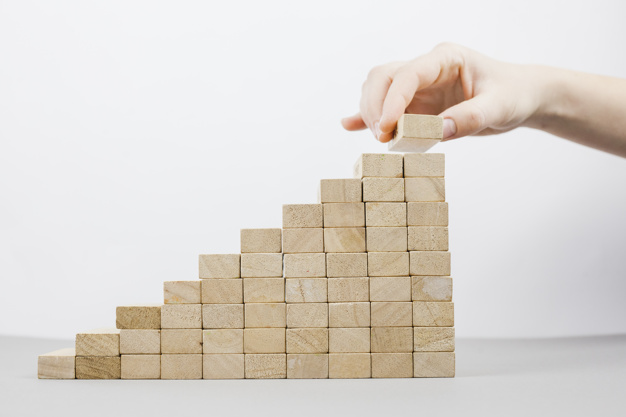 Loading... Please wait...
Loading... Please wait...- Home
- Best ideas for playing and customizing Jenga® GIANT™
- More than a game: Jenga® GIANT™ engineering tips
More than a game: Jenga® GIANT™ engineering tips
Posted by Jenga® GIANT™ on 10/12/2020

The original Jenga® game was created by Leslie Scott and her family while they were living in Africa, and it was launched at the U.K. game fair in 1983. It is an amazing way to help children build structures. However, the Jenga® GIANT™ game is much more than just a game. Its main objective is to maintain a structurally sound tower as you take blocks off and put them on top. This means that while playing, you can learn and put into practice certain aspects of structural engineering.
When you think that playing with your Jenga® GIANT™ game cannot get any better, you discover that it can also demonstrate basic concepts about gravity, physics, and even earthquakes as you try to avoid having the tower of blocks crash. Buildings are very much like Jenga® towers. Different forces can topple both. Therefore, the principles are pretty much the same. Children from a very young age are tiny “engineers” when playing with their Jenga® GIANT™. Discover five structural engineering tips that make your Jenga® GIANT™ game more than a game!
Discover five structural engineering tips with your Jenga® GIANT™ game
Use your Jenga® GIANT™ game to learn these structural engineering tips and take your strategy to the next level.
1. Load and the Jenga® GIANT™ game
Loading refers to the idea that a part of a structure supports the weight of another part or the rest of the structure. In your Jenga® GIANT™ game, no two blocks are cut to exactly the same dimensions or have exactly the same weight, which makes the loading vary across the tower. One of the main strategies when playing with your Jenga® GIANT™ game is locating the loose blocks to remove with ease without toppling the tower. These “loose” pieces are not load-bearing pieces. Therefore, they are not structurally important for the tower at the moment they are pulled or pushed from the tower. When playing with your Jenga® GIANT™ game, understanding which are load pieces will help you to keep the tower from crashing on your turn. To design a building, engineers have to consider a load path from the top to the bottom of the building. Playing with the Jenga® GIANT™ game can help you understand the importance of loading when designing a building.
2. Foundations and the Jenga® GIANT™ game
When playing the Jenga® GIANT™ game, the surface is as important as the game. Finding the right table is essential since bumps or unevenness can destabilize your tower. When building a structure, engineers also have to take into account the foundation surface, since the same principle applies as for your Jenga® GIANT™ game. If you construct a tall building in loose soil, it will likely collapse, create cracks on the walls, or come crashing down in the midst of an earthquake. Foundations help transfer the load of the structure to the ground and also help anchor the structure. By choosing the foundation to play your Jenga® GIANT™ game, you are applying structural engineering tips to keep the tower from crashing down!
3. Tension, Compression and the Jenga® GIANT™ game
Tension and Compression are two concepts that can be put to the test while playing with your Jenga® GIANT™ game. Compression refers to the force applied when two objects are pushed together. Tension refers to the force applied when an object is pulled or stretched. When you remove a middle block from your Jenga® GIANT™ tower, the remaining layers experience both tension from the layers below and compression from the rest of the blocks on top. Another thing to consider is the materials used to achieve tensile strength. Tensile strength refers to the maximum force that can be applied before a material is pulled apart. In this case, your Jenga® GIANT™ hardwood game is the perfect material, since the towers don’t get tall enough or heavy enough to be compressed or tensed to the point of splitting. These concepts are used by structural engineers to establish the building's strengths and weaknesses the same you can use them to create a fantastic strategy to win the game.
4. Rotational Force and the Jenga® GIANT™ game
When playing the Jenga® GIANT™ game, we have all encountered the scenario where the tower balances on only one middle block. This scenario makes the game even more thrilling, since any move can make the tower sway from side to side. This balance in engineering is called rotational equilibrium. The Jenga® GIANT™ game demonstrates this concept quite well, since for a tower to remain upright, it needs to have wide supports (two blocks on each side). At the same time, if the supports are not wide (only one middle block), then there is a greater chance of it toppling to the ground.
5. Earthquake Forces and the Jenga® GIANT™ game
Weight distribution plays a key part in the Jenga® GIANT™ game. When too much weight is placed at the top of the tower, it can sway back and forth until it topples over. The same happens when you have a tall building and an earthquake. Earthquakes can jostle buildings from side to side, and these jostles are experienced differently depending on the distance from the ground. The higher the building you are in, the more you will feel the swaying. The same happens when you are using your Jenga® GIANT™ game. If the tower has more blocks concentrated on top, making it top-heavy, it is more likely that any movement will lead to a collapse.
Understanding how these structural engineering concepts work while playing the Jenga® GIANT™ game is a sure way to become a true Jenga® GIANT™ master.
Find the structural engineer in you by playing with your Jenga® GIANT™ game and creating crash-resistant towers by following these tips. Let the fun begin! Discover our giant Jenga® games at jengagiant.com. Pick the one you like most. Construct the perfect Jenga® GIANT™ building!
